QuestionQUESTION: I know we are not supposed to do this, but I recently asked another expert the same question and never got an answer, so if you would rather not comment, I understand completely, but I thought I'd try.
I recently purchased a 6 yr. old gelding from someone who rescued him from a slaughter kill pen. I rode him at their place without any problem. A month later, I brought him home because I spend a lot of time re-schooling and breaking/starting other people's horses and haven't had one of my own for many years.
I let him settle into his new place for about a week. Started him on groundwork by lounging him with a saddle on and bridle without reins. Groomed him twice a day to get him used to good touch and he responded well, even running toward me when I entered the pasture to bring him to the barn.
I was told he bucks and was not particularly put off by the fact since I deal with a lot of horses that buck, rear, etc without a problem.
Started riding him every day and he went great for a week or better. When he first came it took him about forty feet to stop when asked and his directions (turn right/left) were lacking. He also would want to take off when you would ask him to move into a canter. All this soon improved and he was neck reining with the slightest touch. Stop easily. Backing up. He liked a loose rein and light hands. One thing I did notice is that for a gelding he was exceptionally studish. He would try to attack a gelding if he was nearby, so I had him alone in a paddock by himself. Eventually I put a mare that I was breaking for someone else in with him. He immediately tried to mount her so I took her away again. The next day I got on him he did fine in walk/trot but when I asked him to canter he began to buck. He did this very differently from most horses. Instead of feeling him bunch at the shoulders, he would gather his hind end, leap into the air and kick out. It was in slow motion and he would never at any time pull on the reins. So when I would feel him gather, I would either try to move him forward at a faster pace or try to bring him back to the trot. Soon he was doing it at all three gaits and the longer I stayed on him, the higher he would leap until he literally had all four hooves, five feet into the air at the same time. All this lasted approximately 20 minutes at which time I decided I was tired and wanted to call it a day. As I was walking him back to the barn, he once again gathered his hind end, except this time he flipped. He did it fast with no warning since I thought he was going to buck again, I didn't realize he was launching himself backwards until he was on top of me. As he was getting up, I wrapped an arm around the saddle horn and swung my legs back onto the saddle so that I was still on him, thinking that if his flip didn't work to dismount him, maybe he wouldn't try again. But as soon as he had righted himself, he launched himself backwards again, this time only catching my leg. At this point, I was hurting and bleeding and I gave up. I've dealt with flippers before when I galloped 2 yr olds at the race track and many years ago and sometimes all they need is a gentle touch and out thinking them. But mostly the young ones do it out of fear, not out of aggression. But I sensed no fear in this horse so I first concluded it was pain somewhere. Maybe a pinched nerve in his back or possibly a stifle problem. I brought the a vet out who specializes in racetrack injuries and he found nothing wrong with the horse. I also had him check to see if possibly the horse was a rig because ever since I put the mare with him he had become somewhat nasty by pinning his ears when you tried to feed him, charging or kicking at me if I entered his stall and there was another horse nearby. His Jekyl and Hyde act appeared just after the mare came. But after palpating him and giving him testosterone tests, except that he had a higher level than normal for a gelding, he was definitely gelded. I contacted the rescue and told them that I didn't want to deal with a flipper. It's one thing if a horse rears and accidently falls but not one who literally launches himself backwards. They advised bringing him back and putting him down. I suggested finding him a home as a pasture pet but as he fights geldings and mounts mares and they couldn't be certain that no one would try to ride him in the future, they didn't particularly like the idea. Now the thing I've found with true flippers is that the idea that it gets a rider off and since the horse seems to have no concern for its own welfare, they can be ridden, but the potential is always there for it to happen again. But since I may be wrong, I was wondering if you perhaps knew a way to cure him of this vice. Thanks.
ANSWER: Hi Kylah,
Firstly I would just like to say that I am not sure of the rules, but if your question elicited no response the first time around, I don't see any reason why you shouldn't ask again. Therefore I have no problem responding to you, but as regards an explanation or cure for your problem I am not at all sure that I can help. So, if don't find my answer useful,and you want to try a third time with a new expert, I won't have any complaints. My attitude is that we are all here to help people (and their animals),so questions of ego's don't enter the picture.
Now, having got all that out of the way, my main problem is that I have never encountered a horse such as you describe. Your query, added to another I got recently, raised the question of whether there are animals out there, who are so psychologically damaged, as to be outside the scope of "normal" training methods to "cure". I'm afraid that, at the moment, I don't have the answer to that question.
For the moment I am going to assume that your's is a relatively normal animal,and you have already dealt with the first two issues that would come to my mind, namely pain, and the question of the "rig". The next thing I would look at is the question of dominance. You are obviously a competent and experienced horseperson(sorry I don't know if you are male,or female),but I don't know how well versed you are in the matter of "Herd Dynamics". There are a few things in your mail that might indicate that is, at least, part of the problem. At one point you mention both fear and aggression, and you went on to say that you sensed no fear, which leaves you with aggression emanating from a different source (sorry, that sounds a bit cumbersome, but I hope you can get the drift). In "normal" circumstances that aggression would stem from a desire on the horses part to demonstrate dominance. The brief "fling" with the mare may have encouraged that desire.
I have to admit that I am largely "fishing in the dark" here for the lack of experience of this type of behaviour, but perhaps you could let me know if any of this resonates with you, or if I have gone off on completely the wrong tack.
Meanwhile (more in hope than confidence) I'll wish you luck.
Slan,
Brendan
---------- FOLLOW-UP ----------
QUESTION: I believe what you are saying is correct in that the gelding assumes he has a mare waiting in the barn for him and he wants to get back to where she's at. Since I did not allow him to and asked him to go on with training, the gelding gets mad, bucks and flips. I eventually let him go back with his mare. He wins, and I'm now intimidated by him and afraid to make him mad or contradict him at least if I'm on his back. (During the flip, I broke my nose, my helmet broke, bruises, blood blisters, etc. Far from the heart, but enough the wake me up.)
A person at the barn where I am has a literal stallion that he walked past the gelding and mare one day. The mare was in heat and got rather interested in the stallion The gelding went on attack mode. Charging the front of the stall, rearing and striking, then kept trying to herd the mare away from the stallion (the stalls, 12'x 18'are made from 5' pipe corral fencing wherein the mare and gelding can interact over or between the bars).
Am I looking at herd dynamics where I am now "part" of his herd and he is trying to control me? Or has he found a herd with the mare and now I am a nuisance to be eliminated?
ANSWER: Hi again Kylah,
Thank's for your reply. Not for the first time since I joined this site there are so many things I would like to say, and so many further questions I would like to ask, that it becomes a bit frustrating. However I will try to do the best I can.
Firstly I would like to address the issue of your safety. I get the impression (rightly or wrongly), that you are quite competitive and, also quite young. The injuries you suffered are serious enough, but they could have been much worse. Please take a little bit of time to consider, that you could have a lifetime to enjoy an exciting and fulfilling experience with horses, and question whether or not,it is worth risking that for the sake of one (possibly deranged )animal. I know that this may fall on deaf ears, but I feel that it must be said.
Now, to move on from the general to the particular; there is one thing you mentioned that intrigues me. You state that in the early days that he would try to "take off" when asked to canter. Then you say that the day after the meeting with the mare, he was fine in walk and trot, and the "shenigans" began when you asked for canter. I have experienced a mild version of this myself(very mild in comparison with your experience), and have cured it by an insistence on maintaining the tempo and rhythm of the gait. I understand that there are several versions of "western" riding, and I must confess that I am not familiar with any of them. However in classical dressage terms, the issues you encountered (in riding), would fall under the heading of "not going forward properly". What that means in essence is that the animal would have to alter either the rhythm, or tempo, or more probably both, in order to buck or rear as yours did. This probably sound rather "theoretical" to you, but it simply comes down to a question of how you train the response to the leg(primarily), and the restraining rein(secondarily). I know that that this may sound rather technical, but in essence it is really quite simple. Hmmm... I find myself wondering, once again, if I have made a good job of explaining myself, but if you would like further clarification, then please get back too me.
In conclusion, I would suggest that if you want to continue to work with him, you do so from the ground, and try to establish that you are clearly the "herd" leader.
Might I recommend certain subjects to you, which you may find useful, namely "Herd Dynamics" "Natural Horsemanship", and "Round Pen Techniques". Articles on all the above topics are freely available on the Internet, and many of them are quite good.
I have just looked back over your last mail, and my eye was drawn to your final question. Initially I thought I knew what my response would be but now,after further reflection, I have to say that I'm not sure and that it could be either.I will think about it over the next day or two and see if I can come to a definite conclusion.
Please keep in mind that all I have said is based on a possible(as opposed to probable)explanation of what you have experienced.
I would very much like to hear your immediate response, or failing that, how you get on over the next week or two.
Meanwhile "Best of luck"
Slan,
Brendan
---------- FOLLOW-UP ----------
QUESTION: This may help clarify things somewhat. While I am very competitive by personality, my experience is with breaking and galloping Thoroughbred racehorses. I have done this professionally for 28 years and I am female and currently 44 years old. I am used to 2 yr. olds and their antics. I have dealt with all sorts of "bad" behavior that was brought about by the horse's immaturity, incorrect breaking techniques, fear, etc, but what I find with young horses, is that to correct a problem, you must out-think the horse and stop the problems before they arise. When they can go a week or so without doing anything wrong or someone coming off, they soon forget the "bad" behavior existed. Plus babies seem to dramatize every move. You can feel it coming seconds before it actually occurs and have time to halt it beforehand. My "job" for most of those years of working was to get on the ones no one else could ride and I loved the challenge and seeing the way a soft hand and voice could turn a horse around within a week or more and have them back to safe so that anyone could ride them.
So I am not a western rider or a dressage rider, but a racetrack rider. I have broken (I'm old school, so I know the term offends people, but I don't mean breaking their spirit) Warmbloods for Olympic dressage barns, Quarter Horses to be used for barrel racing, Arabians for show and everything in between so I pick up techniques here and there to better myself and my horses such as half-halting, working off the hind-end leg and seat aids and putting them in frame, but I am by no means an expert on anything.
When I got this gelding, I was getting tired of inexperienced horses and I thought, "Wouldn't it be great to have something already broke that I could just get on and ride without having to worry about spooking, bucking and nonsense in general."
I used to think I was rather immortal until 5 years ago when working as a stallion handler (it was my first time working in a breeding farm capacity), a stallion I was bathing attacked me. He grabbed me by my thigh, picked me up, shook me for a while, then threw me in the corner of the wash stall and began to stomp me with his front feet. I broke a lot of bones including my orbital eye socket and it took me a year to learn to walk again. Before that, I never had a fear of horses, not even a healthy one. After that I had an extreme fear of stallions in general and realized that I wasn't immortal after all. Hence my intimidation of a gelding that acts like a stallion and his ability to break me. I am not altogether familiar with the total essence of herd dynamics as Thoroughbreds and show horses basically spend their lives in a stall and people are the herd dynamic and I have skimmed through a few books by a few people and thought, "Well, that's just common sense, Monty Roberts or whomever just decided to write it down." So, if you could possibly give me a few examples of some good authors or good books in either subject, I am more that willing to read them cover to cover.
As for your comment on altering the rhythm and tempo, yes there is the slightest pause while he gathers himself up to make his leap. I tried moving him forward and I tried bring him back to no avail (not saying you couldn't do it, just that I couldn't). Not that he didn't move forward or bring himself back into a jog or walk, but that he proceeded with the buck regardless. He had total control. By not pulling on the reins and by doing his "buck" in a slow, super controlled way (like a dressage capriole), I was only left with seat and leg aids to control him and as I've mentioned I am by no means an expert, just tidbits I've picked up and work well on babies. The day he flipped was also the only day he ever bucked, so it was the first time I had seen either behavior from him.
By the way, I want to thank you for taking the time with me and I appreciate you thoughtful questions and responses.
Answer Hi Kylah,
Once again thanks for your latest mail.The first thing that struck me,on reading it was how "sheltered" my life with horses has been in comparison to yours. All of the "problem" animals that I have encountered, have been basically docile creatures who have been misled into thinking that they are the dominant ones, and that they can do as they please.
Not too sure where to go next, but I might try the matter of study and further enlightenment. I have to say, that while I bought and read quite a few books in my time, overall they proved disappointing. I had infinitely more success with the Internet. It would appear to me that one can "target" the information one requires much more successfully using that medium, rather than in the realm of books. I know that you mentioned Monty Roberts, but I get the impression that you have not actually read any of his books. However I do know that on a recent Internet search, using "Round Pen Techniques" as the search phrase, I very quickly found a site which had a pretty good description of the entire process. On the subject of "Herd Dynamics" I think (if memory serves me right) that there is an Australian called "Andrew McLean" who has some good articles on line about that subject. As regards "Natural Horsemanship" I am afraid that I cannot recall any author that stands out, but if you search under that heading you may find something useful.
I'm not sure if this will help, but to try to put my attitude in a nutshell, I would generally expect aggression to stem from one of two sources namely, fear, or the desire to dominate. It would appear to me that your experience 5 years ago, and your recent one with your gelding come from the "desire to dominate" camp. I know that you have given me a lot of additional information, and that you have considerable experience, so I am acutely aware of not appearing to "talk down" to you. Therefore I hope you will forgive me if you already know what I am going to say next. In the wild,fights sometimes break out, but for the most part dominance issues are settled by the question of space i.e. the more dominant animal invades the space of a subordinate who responds by moving away. Is it possible that you could use that method to persuade your gelding to accept that he is in fact only a subordinate.
Again I would welcome any comments you may, and if you wish to follow the line that I mentioned at the end I would have a further suggestion that may be helpful.
So, best of luck,
Slan,
Brendan

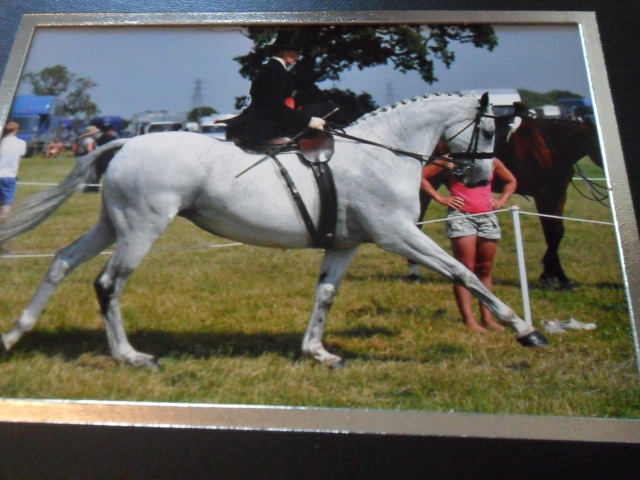 at a loss!!
Question
recent competition pri
Good day
I am a
at a loss!!
Question
recent competition pri
Good day
I am a
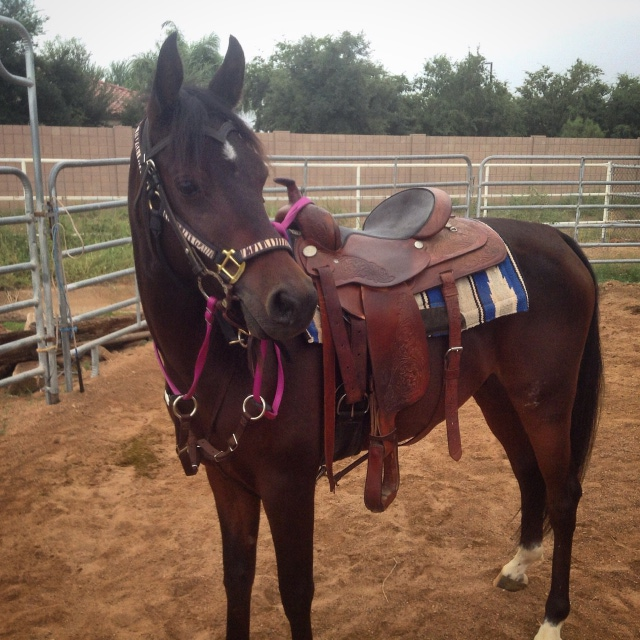 Im I too big for my horse
QuestionDiablo
QUESTION: I have been saddle brea
Im I too big for my horse
QuestionDiablo
QUESTION: I have been saddle brea
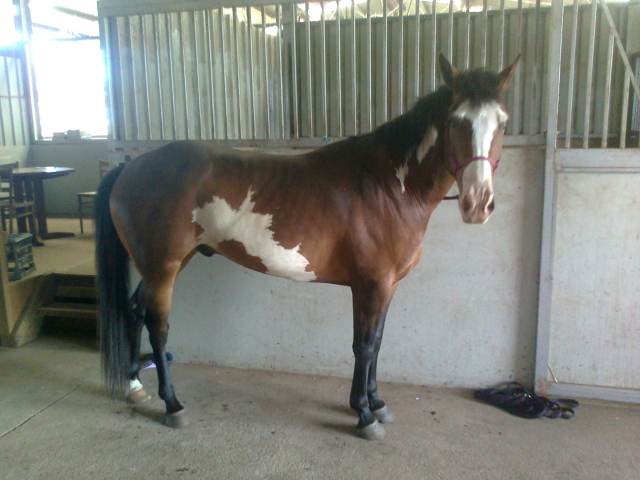 QH x Paint pigrooting / bucking
Question
Saxon
Hi Lyn,
I saw your response to another
QH x Paint pigrooting / bucking
Question
Saxon
Hi Lyn,
I saw your response to another
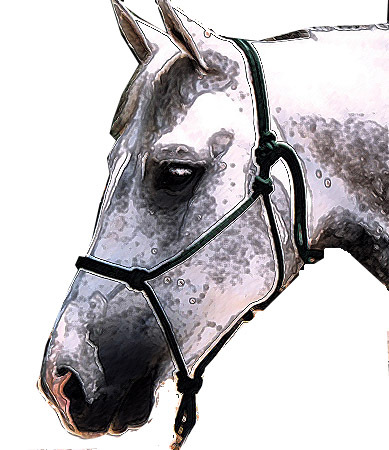 training an older arabian
QuestionHi i have an 8 year old arabian who has been un
training an older arabian
QuestionHi i have an 8 year old arabian who has been un
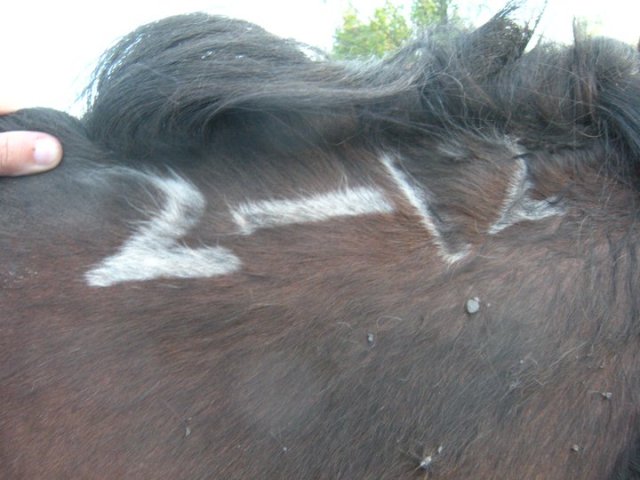 13(?) year old Standardbred mare
Question
Brand
A friend of mine just pulled a mare from
13(?) year old Standardbred mare
Question
Brand
A friend of mine just pulled a mare from